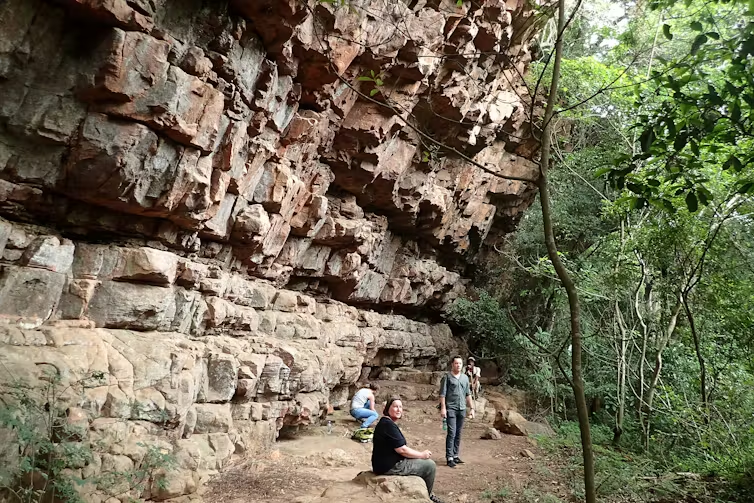Two bizarre artworks were discovered within a cave in northern Australia some 50 years ago. They represent a pair of boats with strange qualities that have perplexed scholars ever since their discovery, and they are probably hundreds of years old.
Researchers may have now discovered the images in a study that was just published in the journal Historical Archaeology, shedding light on Indigenous stories that have been long-erased.
Even while neighboring drawings of Indonesian fishing boats and later European ships have been discovered, the two mystery vessels are distinct: The vessels, according to the experts, are "combat ships" from the Moluccas, a collection of Indonesian islands situated immediately to the north of Australia.
According to a statement from Flinders University in Australia, the study's lead author, Mick de Ruyter, a maritime archaeologist, these motifs "support existing ideas that sporadic or accidental voyages from Indonesia to the Australian coastline took place before or alongside regular trepang [Indonesian for "sea cucumber"] fishing visits."
Uncertainty exists over the specific circumstances in which Aboriginal populations came into contact with Moluccan boats. The researchers note that the existence of fighting craft nevertheless suggests instances of physical violence or at the very least a projecting of authority. It's possible that the two groups got into a fight over commerce, headhunting, or slavery.
An other hypothesis put forth by Sue O'Connor, an archaeologist at Australian National University who was not involved in the study, is that Aboriginal groups may have traveled to the Moluccas. This either shows that such crafts have traveled to the coastlines of Arnhem Land [a region in northern Australia] or Arnhem Land residents have traveled to the Moluccan region, seen those crafts there, and returned to paint them.
The level of detail portrayed in the paintings astounded the researchers as well. Such accuracy suggests that the Indigenous artists spent more time with these ships than they did merely glimpsing them from the shore. The paddles, prowl boards, pennants, and other decorative elements of the ship have all been accurately depicted.
Based on certain features, such as the oars and pennants, researchers concluded that these boats likely weren't fishing vessels. Darrell Lewis / Flinders University
According to the university's statement, reports from Dutch colonists show that during the 17th century, groups from the Moluccas were sailing "frequently" to Australia.
The study was not conducted by Australian archaeologist Paul Tacon of Griffith University; nevertheless, he is collaborating with Wesley and a wider group to investigate how Aboriginal people documented their contacts with outsiders. He tells Live Science's Jennifer Nalewicki that the new study gives encouraging new information.
This thorough investigation demonstrates persuasively that there was communication between Moluccan islanders and Aboriginal people in Arnhem Land, Australia, hundreds of years ago.






